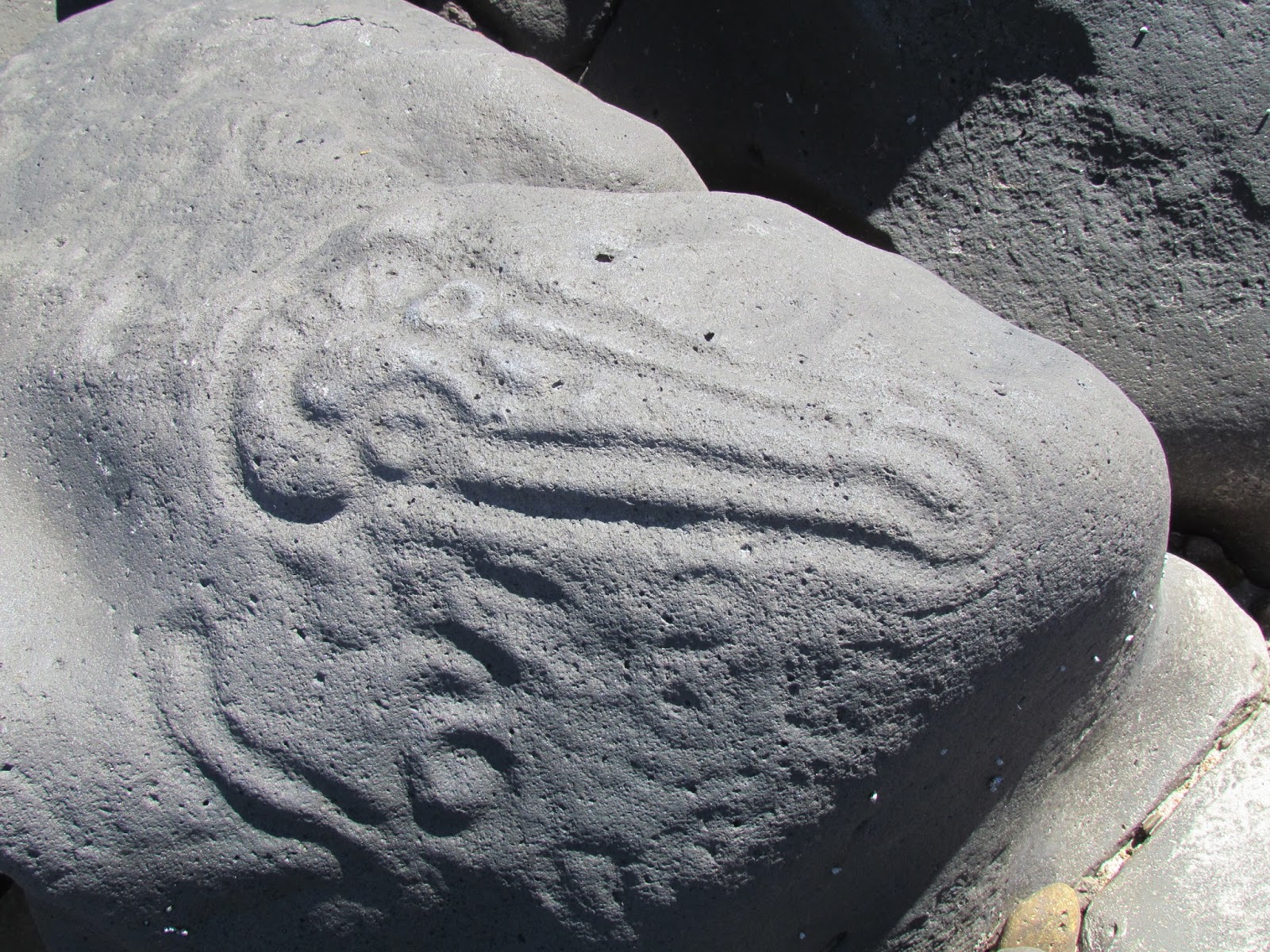I'm posting over at The Budget Travelers' Sandbox Travel Photo Thursday..
We made plans to meet Bill and Carol for breakfast on Thursday morning at 8:30 in the Palapa. Then they were taking us to Las Labradas, another Unesco site (Durango is also).
We
took the toll road; tolls here in Mexico are much higher than at home. The
return trip cost $200 pesos or about $18 CDN.
Las Labradas is located right on the beach of San Ignacio in the fishing village of Barras de Piaxtia, about 45 minutes north of Mazatlan.
As we drove down the dirt road we passed goats, pigs , roosters and some houses, very rudimentary but all had satellite dishes. But no washing machines...
This is
touted as the biggest open-air museum in Mexico. It has a recently
opened museum with some excellent artefacts.
From the building
you step outside and walk to the water. We were very lucky as we were the only
visitors.
Carol recounted stories of encountering tour groups who complain that they don't want to walk out on the rocks or people with canes. Read the brochure, people!
Carol recounted stories of encountering tour groups who complain that they don't want to walk out on the rocks or people with canes. Read the brochure, people!
This centre is home
to one of the finest collections of carved stones in the country
-some dating back as far as 1,500 years.
The following educated description of the area comes from the UNESCO site. The photos are ours.
The Las Labradas Archaeological Zone consists of a group of basaltic rocks of volcanic origin located on a coastal beach shore bearing the same name. It is the only one of its kind in the world because it sits within the coastal tide zone, which gives it yet more importance, because these rocks constantly receive the impact of the ocean's waves, and at times are totally covered by the tide.
These rocks, of diverse dimensions, are characterized as having a smooth, polished and rounded surface, due to the erosion caused by their constant contact with the sea. Their color is dark and opaque, sometimes appearing - due to the sun's reflection- to have several tones of gray during the day. Large amounts of rounded pebble stones are found on the sand's surface that surrounds this group of rocks, as trace remains of an old river or stream that flowed through this exact place.
The spatial location of the rock engravings seems to follow a well-structured order, because coordinating sets have been identified; nevertheless, there does not seem to be a logical appearance of their distribution, that is to say, their placement, as it is somewhat arbitrary, since some engravings are found on the rocks' surfaces, others on their sides and some are even found on the rocks' corners.
John and
Carol ventured much further out.

Bill and I were happy to sit on a rock and
discuss this ancient civilization while watching the sea gulls and pelicans
devour the sardines in a feeding frenzy.
Carol found this crab carcass that looks like beaded work.
The fence is a row of cacti. Very smart and cost effective.







































Such an interesting post and your photos have taken me into another world as I sit and write here in Western Australia today. Thanks for sharing.
ReplyDeleteOooh, I love the rocks! The last few are so perfectly sculpted and polished. Beautiful.
ReplyDeleteThanks for the tour.
You bring such interesting topics to light. And this is certainly another one of them!
ReplyDeleteLove the pigs and the cactii fence. The shot of the bell is great. The beach and rocks look wonderful.
ReplyDeleteI would have never guessed that you were showing us a whale carcass, so I'm glad you mentioned it. I like the "beadwork" crab, too. Those carved stones are incredible. I'd love to see this someday.
ReplyDeleteWhat a great day! Those rocks are amazing. I am always surprised at things that are expensive in economically poorer countries. Who do they build these toll roads for? I can't imagine the average Mexican paying $18.00. I would choke if I had to pay that in Canada.
ReplyDelete